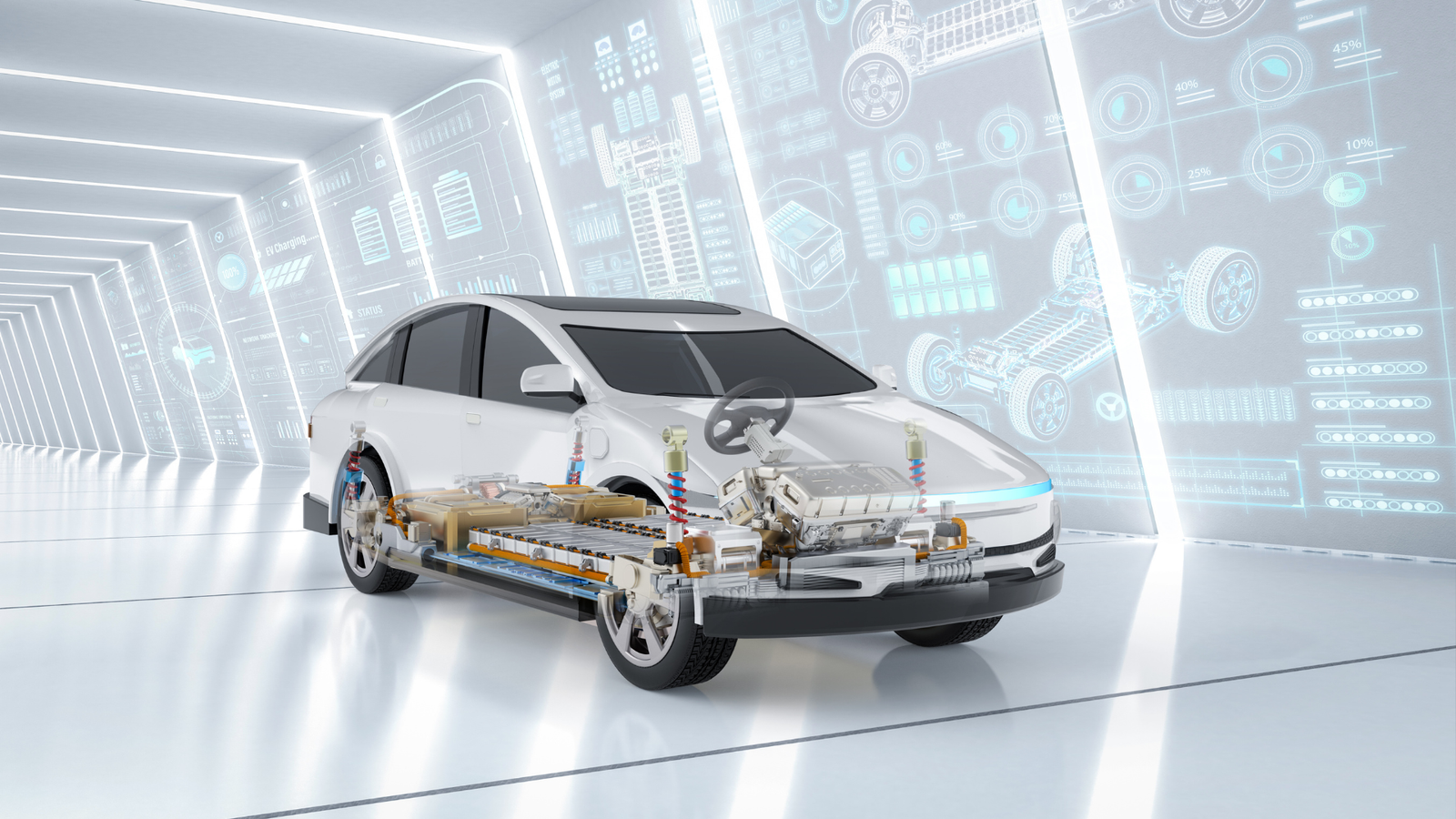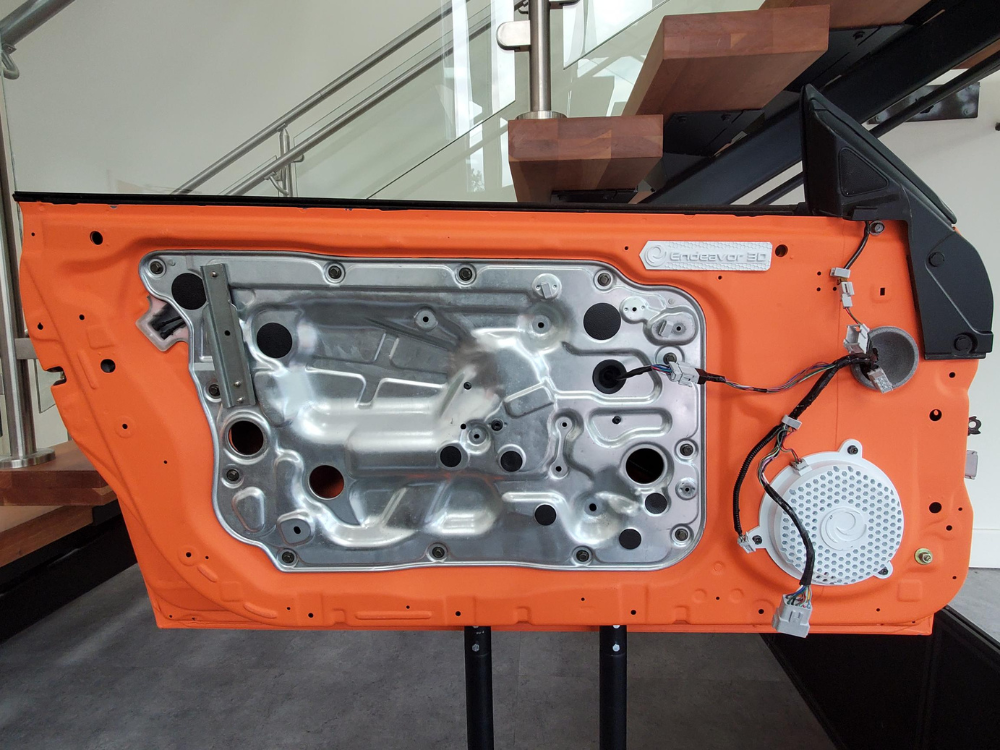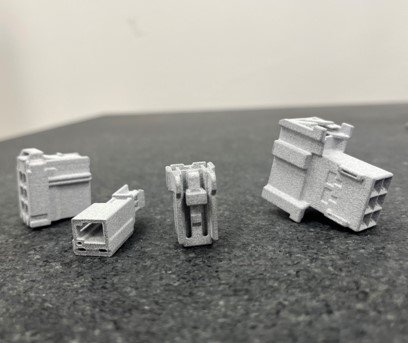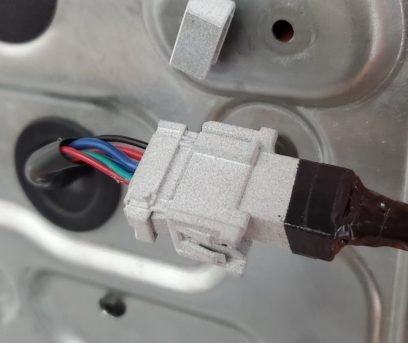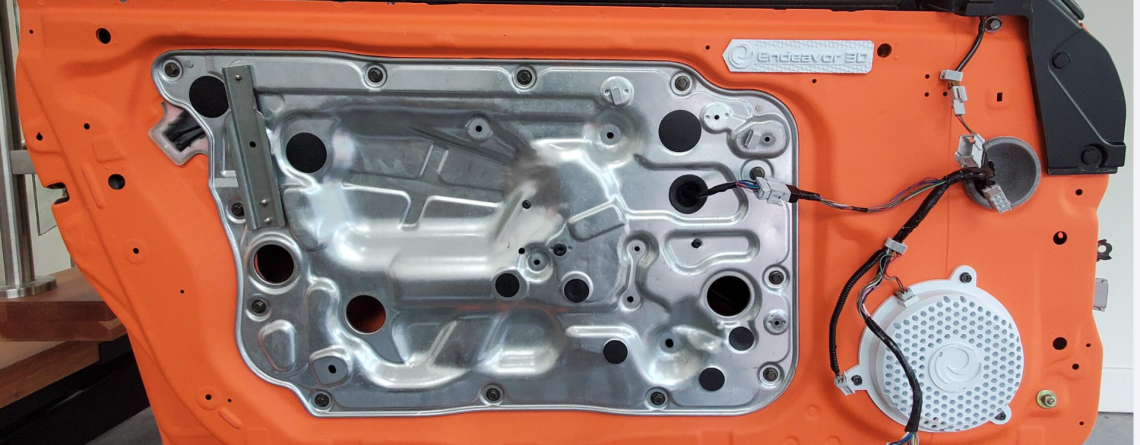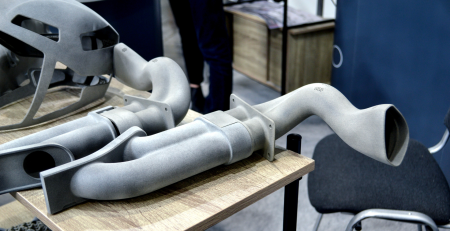Electronics are rapidly becoming the backbone of modern vehicles, expected to account for nearly
50% of a car’s total cost by the end of the decade. In fact, by 2030, the
global automotive software and electronics market is projected to reach $462 billion.
As automotive platforms become more software-defined and electrically driven, the complexity of onboard systems, from sensors and wire harnesses to high-voltage connectors, has dramatically increased. This shift not only brings engineering challenges, but also heightened safety and regulatory scrutiny, especially around material flammability.
This is where 3D printed car parts with flame-retardant materials like Nylon PA 12 FR become a strategic advantage. As one of the first contract manufacturers in North America to offer Nylon PA 12 FR, Endeavor 3D leveraged the material along with Multi Jet Fusion (MJF) to replace a set of broken wire harness components inside a vehicle door. The result was a production-ready, flame-retardant solution delivered in less than 24 hours. What follows is a closer look at the application, material properties, and why Nylon PA 12 FR is well-suited for the demands of modern automotive design.
The Challenge: Safety-Critical and Time-Sensitive Repairs
Wire harness retainers and connectors may be small, but they serve a critical function in modern vehicles: routing and protecting the increasingly dense network of wiring inside doors, dashboards, and engine compartments. In this case, Endeavor 3D was tasked with replacing several damaged wire harness clips in a door subassembly. Because these components interface with electronic locking mechanisms, sensors, and switches, the replacement needed to meet stringent burn resistance standards outlined in the Federal Motor Vehicle Safety Standards (FMVSS) NO. 302 (Flammability of Interior Materials). Furthermore, the 3D printed car parts required an exact match of the form and function of the original part.
Car door before Nylon PA 12 FR components were installed
Traditional solutions would have required injection mold tooling —adding weeks of lead time and significant cost for low-volume production. With vehicle manufacturing cycles under pressure and downtime carrying high penalties, the need for an on-demand, certified solution was paramount.
The Solution: PA 12 FR and Multi Jet Fusion
To solve this problem, Endeavor 3D used HP’s Multi Jet Fusion (MJF) technology with Nylon PA 12 Flame Retardant (FR), a halogen-free thermoplastic specifically engineered for electrical and transportation applications. The team reverse-engineered the broken parts using 3D scanning and validated the design for printability.
Because of the 3D printed car parts’ small size and compact geometry, Endeavor 3D was able to maximize the build volume by densely packing the printer bed, driving down the cost per part and accelerating production. As a result, Endeavor 3D was able to scan, 3D print, and install flame-retardant, safety-compliant replacements in less than 24 hours. For this application, the parts met the required dimensional accuracy thanks to MJF 3D printing’s 80-micron resolution.
Why PA 12 FR is Ideal for Automotive Applications
In the automotive industry, especially in safety-critical and electrified systems, material choice can mean the difference between passing and failing regulatory approval. Nylon PA 12 FR is engineered to meet the mechanical, thermal, and electrical requirements of under-hood, interior, and structural applications.
1. Flame Retardancy Without Halogens
Nylon PA 12 FR achieves UL 94 V0 flame classification at 2.5 mm thickness, a benchmark requirement for many in-cabin and powertrain-adjacent parts. Unlike traditional halogenated flame-retardant formulations, this material is halogen-free, aligning with global environmental directives such as RoHS and REACH, and supporting OEM initiatives for safer, more sustainable materials.
2. Electrical Insulation for High-Voltage Architectures
As EV and hybrid vehicles transition to 400V and 800V electrical architectures, insulating materials play a pivotal role in preventing short circuits and protecting electronic modules. Nylon PA 12 FR offers volume resistivity of 4.96 × 10¹³ Ω·cm and surface resistivity of 9.74 × 10¹⁴ Ω, making it suitable for insulators, housings, cable routing components, and connectors in high-voltage systems.
3. Thermal Stability Under Load
Automotive components are routinely exposed to elevated temperatures during operation. With a heat deflection temperature (HDT) of 172°C at 0.45 MPa, Nylon PA 12 FR maintains dimensional stability and structural integrity under prolonged thermal stress —ideal for engine-adjacent parts, HVAC ducts, and sensor brackets.
4. Mechanical Strength and Precision for Functional Parts
Unlike many flame-retardant thermoplastics that compromise mechanical properties for fire resistance, Nylon PA 12 FR provides tensile strength of 46 MPa, elongation at break of 10%, and a Young’s modulus of 2580 MPa. These attributes make it well-suited for load-bearing clips, brackets, and structural fasteners where both rigidity and reliability are required.
One of the most advantageous aspects of 3D printing is the ability to store components digitally. For automotive suppliers and OEMs, this means that legacy parts, low-volume components, and emergency spares can be digitally archived and reprinted on demand, rather than warehoused or reordered through slow legacy supply chains.
In this case, Endeavor 3D’s engineering team archived the approved harness connector design into a secure digital library. Should a replacement ever be needed again, whether for production support, recall repair, or late-stage maintenance, it can be retrieved and 3D printed within hours. This capability is especially useful for service parts, custom trim, and legacy components in older vehicle platforms where part availability is limited and tooling has been retired.
Supporting the Future of Automotive Parts
As the automotive industry pivots toward electric vehicles (EVs), autonomous platforms, and connected cars, the need for materials that are electrically safe, lightweight, and flame-resistant is intensifying. Components like battery cable holders, fuse box mounts, and cooling system brackets all require materials that can withstand thermal stress while maintaining electrical safety.
Endeavor 3D’s ability to rapidly reverse-engineer, print, and digitally store safety-critical 3D printed car parts demonstrates a broader shift in how OEMs and Tier 1 suppliers can future-proof their supply chains. With additive manufacturing and advanced materials like Nylon PA 12 FR, the future of 3d printed car parts is not just lighter and safer —it’s smarter, faster, and built on demand.
